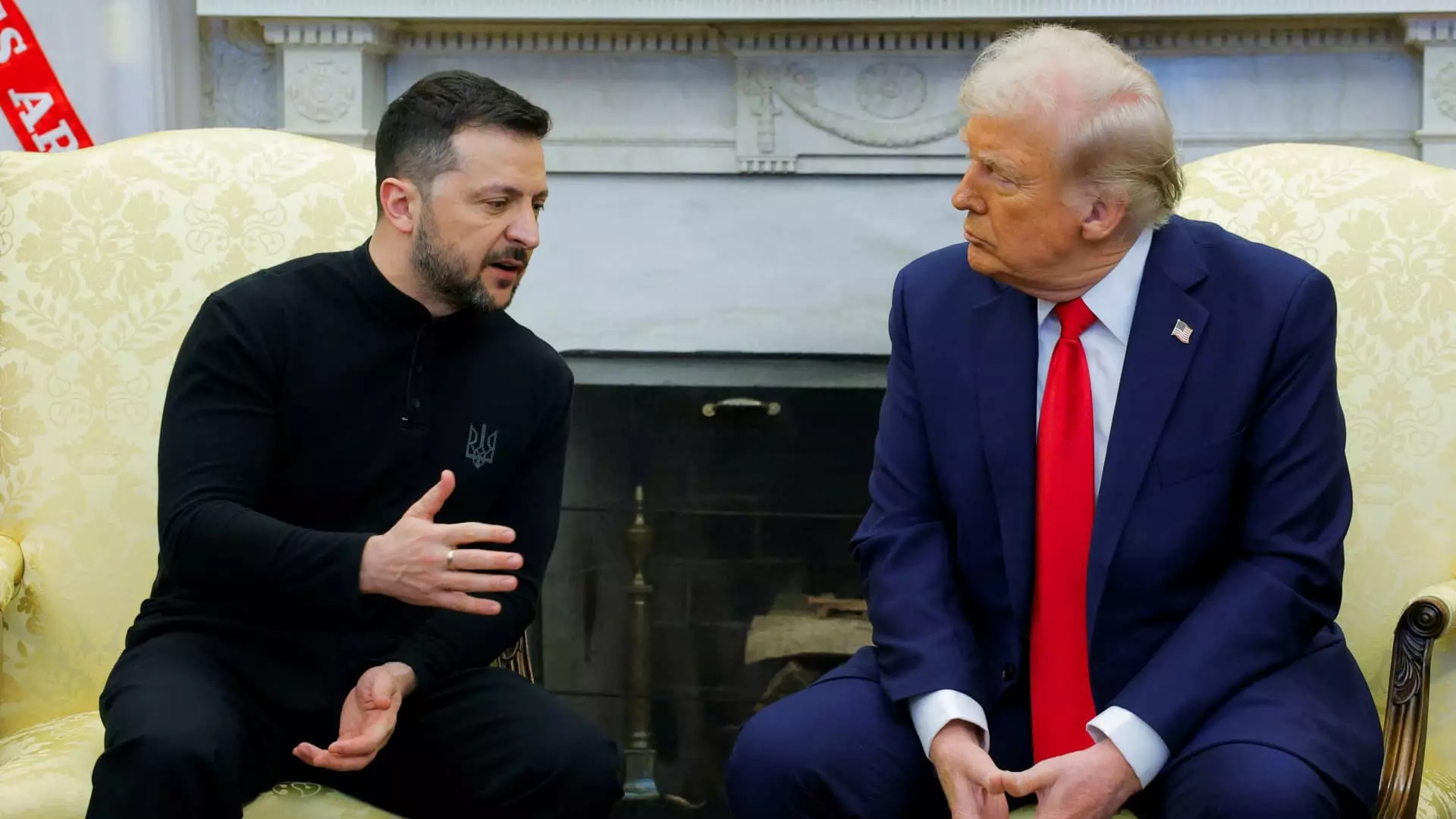In a world marred by conflict and a desperate cry for peace, the recent meeting between U.S. President Donald Trump and Ukrainian President Volodymyr Zelenskyy in Rome took place under heavy scrutiny. Set against the backdrop of Pope Francis’s funeral—a symbol of compassion and unity—the meeting was framed as potentially historic. In times of dire strife, can such high-profile discussions between two leaders pay off, or do they merely serve as political theater? The situation has been further complicated by the lingering animosity and differing strategies between the leaders, where Zelenskyy expressed hope for peace and Trump maneuvered to assert U.S. influence.
Such diplomatic dynamics often reveal more than what meets the eye. While pursuing peace is a noble aim, it is essential to dissect the motives that underpin these interactions. Perhaps this meeting isn’t merely a chance to broker terms but a chess game where both leaders are trying to gain an upper hand in the relentless power struggles of international politics.
A Fragile Relationship
Trump and Zelenskyy’s relationship has not been smooth, shaped by past grievances, accusations, and a shroud of misunderstanding. Their turbulent encounter in the Oval Office points to the fact that the bond is less about camaraderie and more about necessity. The conversations in St. Peter’s Basilica could have been productive, yet one must question whether any substantial agreement can arise from such a tenuous foundation. The unresolved tensions between these two leaders lend a cloud of skepticism over the prospects of genuine negotiations.
Zelenskyy has consistently pushed for a complete ceasefire and lasting peace, while Trump’s suggestions—particularly a risky acknowledgment of Russia’s claim over Crimea—indicate a lack of alignment in objectives. This raises an alarming question: If the underlying missions are misaligned, how can any productive dialogue emerge? The stakes are incredibly high, especially for Ukraine, whose sovereignty hangs precariously in balance.
The Illusion of Progress
As Zelenskyy and Trump carved out a brief moment for discussion amidst the solemn occasion of the Pope’s funeral, their aims diverged further: hope for peace from Zelenskyy versus political posturing from Trump. While both sides might declare the meeting “very productive,” the substantial detail that follows holds the real weight. If one scrutinizes the specifics, we find that tangible outcomes are lacking. What does “productive” truly mean when the complexities of war and national identity cloud straightforward negotiations?
The danger lies in equating friendly platitudes with real progress. In a dynamic where Trump has threatened to walk away from negotiations, such performative gatherings can quickly devolve if not backed by genuine intent. Zelenskyy’s optimistic outlook does not necessarily translate into actionable results, nor does it guarantee that the demands made—like the desire for an unconditional ceasefire—will see light in negotiations rife with conflicting interests.
The Echoes of Past Conflicts
Reflecting upon the gravity of the situation, one cannot ignore the past rhetoric from both leaders. Trump’s previous comments about Zelenskyy “gambling with World War Three” hang in the air, revealing a disdain that complicates his diplomatic credibility. With such narrative dissonance, how can Zelenskyy trust that the accommodations being sought are sincere? Double standards previously displayed by Trump towards international alliances and conflict resolution only add to the fragility of this negotiation.
Furthermore, the provocative stance that accompanied the Oval Office meeting lingers—a mere suit versus military attire becomes a symbol of more significant underlying issues. It illustrates the disconnect between style and substance, and how image is often prioritized in political discourse. During this critical time when the stakes could not be higher for Ukraine, reducing identities to clothing serves only to distract from urgent matters at hand.
A Call for Authentic Engagement
The necessity for authentic engagement cannot be stressed enough. Both leaders must leverage their positions not just as political pawns but as advocates for real change. Trump’s call for a ceasefire may carry weight but cannot manifest if underlaid with unwanted concessions. It would be naive to assume that smooth public relations could erase the extensive conflict engrained in their negotiations.
In the grand scheme of political maneuvering, one thing remains clear: the pursuit of peace must transcend mere rhetoric. For the sake of both nations, there must be an earnest effort initiated by Trump and Zelenskyy to bridge their differences, confront biases, and forge a path that prioritizes the preservation of life and sovereignty over the perpetuation of conflict. Only through a genuine commitment to dialogue can the specter of war be lifted and a lasting peace achieved.

